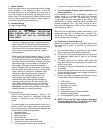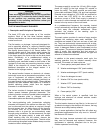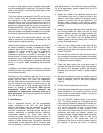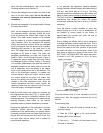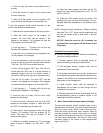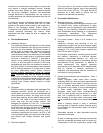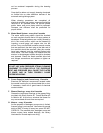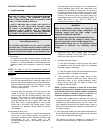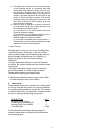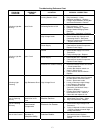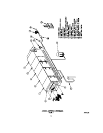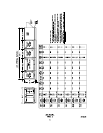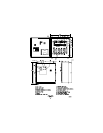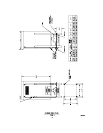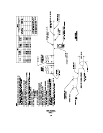
11
SECTION IV TROUBLE SHOOTING
1. Trouble Shooting
WARNING:
EXERCISE THE USUAL PRECAUTIONS WHEN WORKING
WITH HIGH VOLTAGE. THE MAXIMUM OPERATING
OUTPUT FROM THE POWER SUPPLY IS 15,000 VDC AND
5.5 MA. to 11.0 MA. WHEN IN PARALLEL.
IF SAFETY SWITCHES ARE CLOSED AND CIRCUIT IS
ENERGIZED, DO NOT TOUCH HIGH VOLTAGE. WHEN
THE CIRCUIT IS DE-ENERGIZED, ALWAYS BLEED OFF
REMAINING STATIC CHARGE WITH AN INSULATED
HANDLED SCREW DRIVER BY SHORTING
GROUND
THE POINTS OF HIGH VOLTAGE DC POTENTIAL.
WARNING
Risk of Electrical Shock
The servicing Instructions are for use by qualified
personnel only. To reduce the risk of electric shock, do
not perform any servicing other than that contained in
the service instructions unless you are qualified to do
so.
A. Introduction
This section on trouble shooting provides a description
of potential malfunctions, their cause, location and
correction. A Trouble Reference Chart listing the most
probable causes and corrections follows the general
text.
NOTE: All repair to the fire suppression system (If
supplied), must be completed by the authorized fire control
contractor. For a system supplied with the ATS unit refer to
Figure 7.
The electronic air cleaner is the unit within the system
that has the highest efficiency collection rating and is
also the one with the highest potential for malfunction.
When a malfunction does occur, the outage is usually
found in the electrical secondary circuit in the
ionizing-collecting cell(s).
Indicating lights are installed in the face panel of the
control to monitor the electrical operation of each
power supply and the ionizing-collecting cell(s) they
energize. The quantity of power supplies per unit is
dependent upon unit size with one supply to each
ionizing-collecting cell tier in height. Other than the
basic hand tools, it is advantageous to have a volt-
meter with a 20 KVDC high voltage probe. These
instruments are standard catalog items by several
manufactures.
B. Secondary Short Circuit
The most common outage is a short in the secondary
circuit and is best located through the process of
elimination. Symptoms are a flickering indicating light
accompanied by an arcing noise in the
ionizing-collecting cell(s) or an indicating light that is
not glowing.
A flickering light with an arcing noise is an indication of
a high resistance short circuit and a light that is not
glowing is an indication of a dead short. (A light that is
not glowing can also be an indication of an open circuit
in the primary circuit. Refer to the paragraph on open
circuits.) The short may be in the power supply, the
high voltage cables or the ionizing-collecting cell(s). To
isolate the short to any one of these three
components, proceed as follows:
WARNING
When safety interlock switches are closed, do not
come in contact with high voltage components. The
operating output from the high voltage power
supply(s) is 12,500 VDC and 6 MA.
When the power supply(s) is de-energized there is a
20 second delay for the voltage to decay. Always
short from ground to a point of high voltage with a
Well-insulated jumper wire or an insulated handled
screwdriver to bleed-off any remaining residual
charge.
1. Disconnect both high voltage leads from their
respective terminals in the power supply and support
them away from any point of contact.
2. Energize the power supply:
a. If the light still flickers or does not glow; the trouble
is indicated to be in the power supply. First, Replace
the power supply in its entirety.
b. If the light glows steady with the leads disconnected
the power supply is indicated to be normal.
3. Next reconnect both high voltage leads to their
respective terminals inside the power supply and
disconnect them at the ionizing-collecting cell(s).
Support them away from any point of contact and
energize the power supply.
NOTE: It will be necessary to close the access door
electrical interlock switch operated by the access door
and affix the junction box lid with hardware supplied to
close the electrical interlock switch on the box, to
complete the primary circuit to the power supply.
a. If either high voltage lead is defective, the light will
indicate the trouble. Each lead may then be checked
separately by disconnecting them, one at a time, from
their respective terminals at the power supply. When a
lead is found to be defective, replace it in its entirety. Do
not repair or splice.
b. If the light glows steady with the leads disconnected at
the ionizing-collecting cell(s) the trouble is then indicated
to be in the ionizing-collecting cell(s).
The trouble can then be isolated to a single cell or
ionizing or collector section of a given cell as follows:




